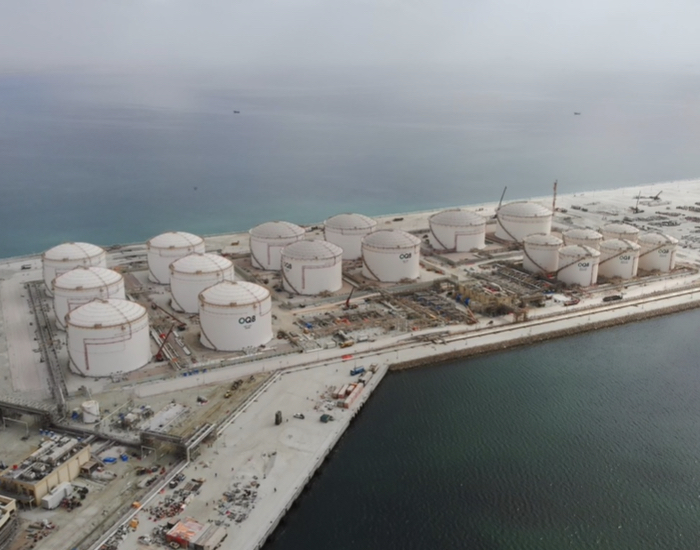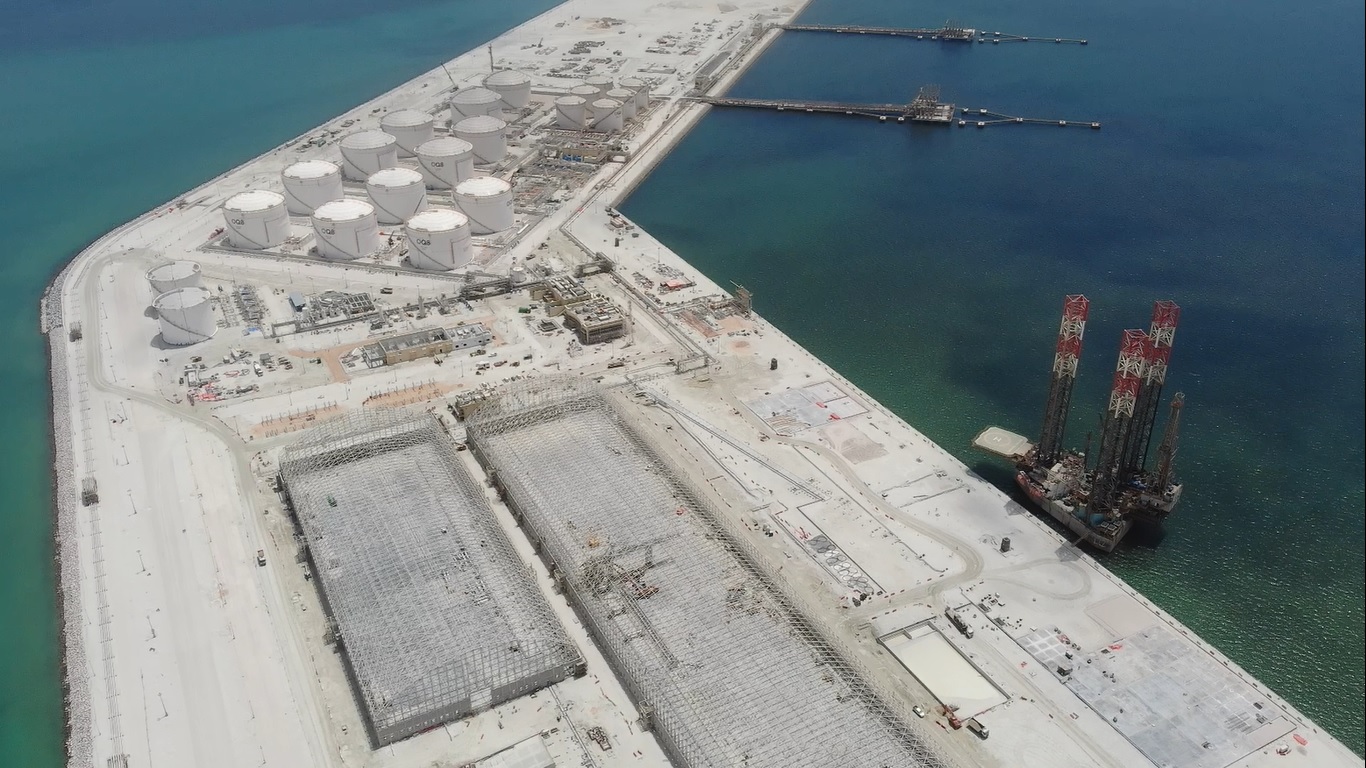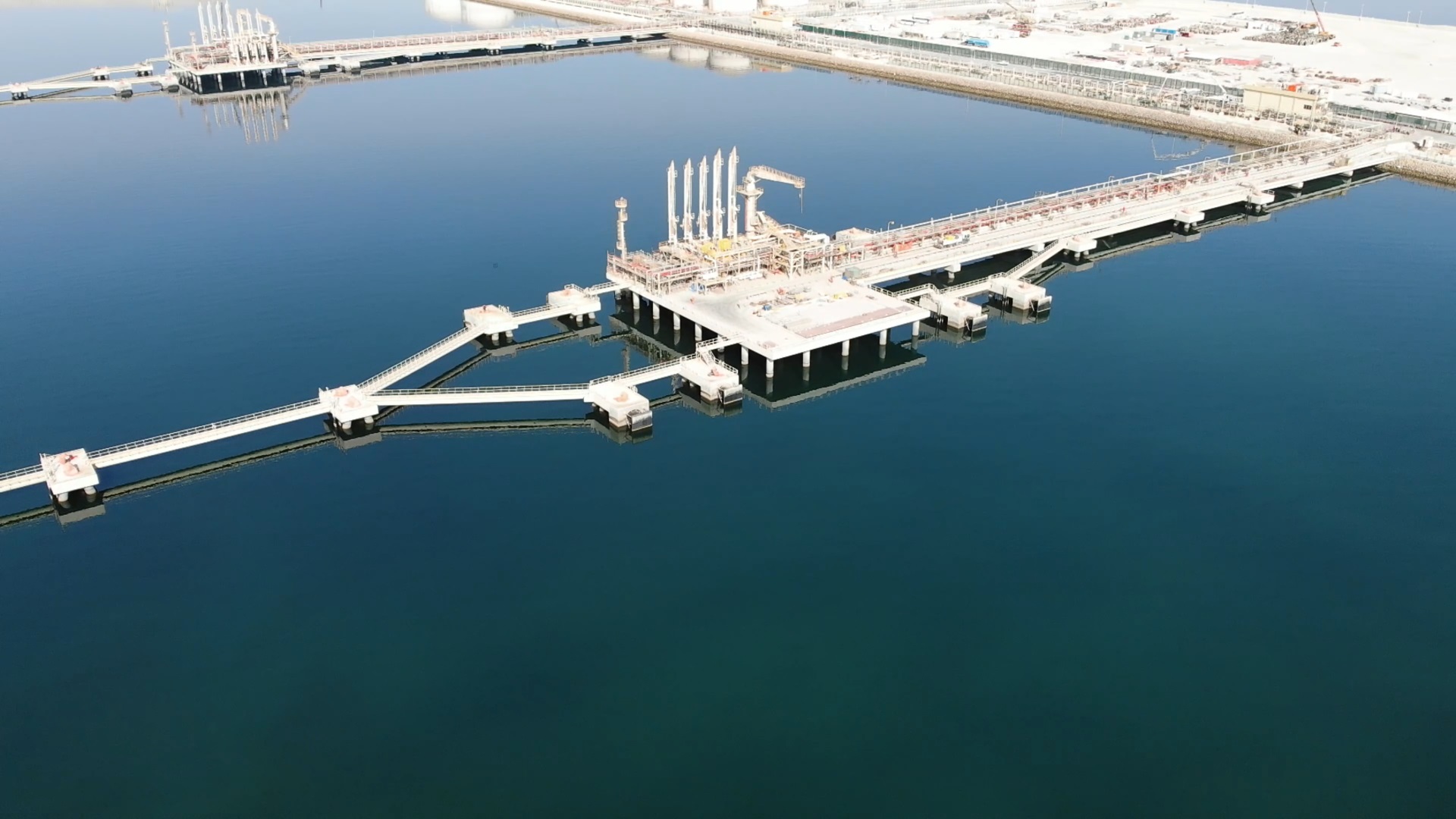The project
The DUQM Refinery is an integrated project of national significance under development inside the Special Economic Zone of Duqm (SEZAD).
Duqm is located 600 km south of Muscat, in a strategic position on the Arabian Sea, and in the last decade it has attracted diversified economic activities due to its identification by the Omani government as a cornerstone for the economic and social development of the region.
The Saipem/CB&I consortium (EPC3) was awarded three distinct sub-packages of the Duqm Refinery: the export terminal (sub-package A), the 80 km crude oil pipeline from Ras Markaz to Duqm (sub-package B), and the crude oil import facilities at Ras Markaz (sub-package C).
Other packages have been assigned to major EPC contractors such as the Tecnicas Reunidas/Daewoo JV (EPC1) responsible for the refinery and the Petrofac/Samsung JV (EPC3) responsible for associated utilities.
Key facts and figures
Impacts
The 230,000 BPD Duqm Refinery represents a fundamental project for the development of the city of Duqm, the Al Wusta Governorate and for the Omani economy in general.
The Sultanate of Oman intends to create one of the most important ports in the Middle East right in the Duqm area, exploiting its strategic position on the Arabian Sea. In this framework, this project represents the main driving force and enabler for the subsequent creation and development of a new important commercial, residential and touristic area in Oman.
An extraordinary project
The Saipem project unfolds over three simultaneous work fronts, with the two main construction sites located 80 km from each other while the third one constantly advances as the pipeline progresses between the two main sites from Ras Markaz to Duqm.
The coordination of activities among the three different construction sites is the critical aspect for the safe, seamless and harmonious development of the impressive project.
Logistics, external and internal interface management, environmental protection, and respect for local communities are key aspects in the implementation effort.

Technological challenges
DUQM is privileged with unique marine biodiversity, coastal plains, ecologically sensitive areas, archaeological sites, traditional fishing ports and presence of Bedouin communities close to the working areas which represent challenging conditions for the performance of the activities that must be carried out while safeguarding this peculiar natural, archaeological and social context.
The environmental protection and preservation of cultural heritage are major challenges for the project’s progress and especially during the construction of the 80 km pipeline (sub-package B) that, along its route encounters 19 archaeological sites, 1 wildlife reserve, several high conservation ecological zones, sensitive areas populated by endemic species, and often inhabited by Bedouin communities. The challenge relating to the pipeline was to carry out the construction activity while protecting the historical and cultural heritage of Oman and the conservation of the environment.
Before the start of construction activities, Saipem performed a thorough study and protected all the archaeological sites in line with the Omani Ministry of Heritage and Culture (MHC) standards, implementing the necessary protection measures such as the installation of barricades, information signage and warning tape, especially to safeguard the “Trilith” area, considered a highly significant find and taking priority over the pipeline for which a challenging re-routing was engineered and implemented.

Assets and people
The project has directly involved more than 5000 people at peak, generating an impressive stimulus for Small-Medium Entreprises (SME) and for the local and neighbouring workforce.
Saipem’s personnel involvement, distributed over three different locations, stood out and was appreciated for the effort and logistical efficiency required by this unusual configuration.
Saipem’s project strategy is based on sustainable development aimed at the generation of long-term value for the communities and the society in which the company operates, with a special focus on people, their health and welfare, and a strong commitment to safeguarding the environment and local communities. Some of the key drivers are the compliance with government requirements related to Omanisation and the maximisation of In-Country Value in order to create employment opportunities, contribute to the development of the local Small-Medium Enterprises (SME) and establish and nurture good, long term relationships with all our local and national stakeholders.
Since the project started in 2018, Saipem and its subcontractors developed a successful model achieving 12 million LTI free working hours, protecting all the 19 archaeological sites along the pipeline, preserving endemic species, largely exceeding the In Country value. Furthermore it achieved an outstanding 37% of Omanisation as well as administered 22 local scholarships and 1 international master and employed 100% of the 57 trainees out of which 20 directly by the company.

Key takeaways
01
Supporting a new client in a high potential country and nurturing Saipem’s reputation by ensuring efficiency, quality and reliability while leveraging our know-how and project management, construction, HSE and social responsibility skills.
02
The DUQM refinery is a project linked to traditional extractive energy, but it was designed with the ambition of becoming a long-term sustainable development engine and a true enabler of sustainable growth in the region. The five guiding pillars of the project's social responsibility strategy - women's empowerment, conservation of heritage and culture, capacity building of young people, training and education, environmental protection - highlight the important role that the private sector is playing in the development of the country and its people, whose skills will be the basis of Oman’s future managerial classes.
03
Logistics, external and internal interface management, environmental protection, and respect for local communities are key aspects in the implementation effort.
04
In overcoming unexpected issues generated by the COVID-19 pandemic, especially as regards the protection of health, manpower was reduced on site and in the delivery of the main equipment and project materials.
DUQM on YouTube
The Duqm project is part of one of the most ambitious development projects in the Middle East. Aiming to become a long-term sustainable development engine, and a real enabler of sustainable growth in the region, this project creates a structure that will benefit many generations to come.